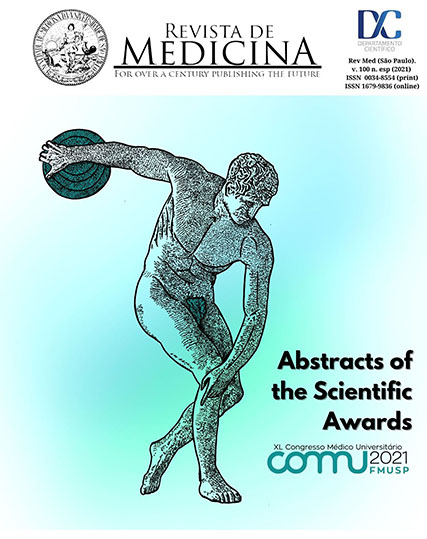Myoclonus-dystonia syndrome due to GNAO1 mutation: a case report
DOI:
https://doi.org/10.11606/issn.1679-9836.v100iespp21-21Palavras-chave:
Myoclonus-dystonia syndrome, GNA01 mutation, Whole exome sequencingResumo
Introduction: Myoclonus-dystonia syndrome (MDS) is an autosomal-dominant movement disorder characterized by childhood-onset myoclonic jerks and dystonic symptoms. The estimated prevalence for MDS is 1/500.000 and usually it is associated with mutations in the epsilon-sarcoglycan (SGCE) gene. One rarer genetic cause for MDS is the GNAO1 mutation. Cytogenetically located on 16q13, this gene encodes a specific subclass of G protein, a signal-transducing molecule important to the central and peripheral nervous system. This heterotrimeric guanine nucleotide-binding protein is composed of alpha, beta, and gamma subunits. The GNAO1 gene usually encodes for G-alpha-o, one of the four subclasses of the G-alpha subunit. GNAO1 variants can cause a wide clinical spectrum and the two major characteristic features caused by them are early-onset epileptic encephalopathies (EOEEs) and involuntary movements without seizures. Genetic testing for GNAO1 should be considered in patients with EOEE or involuntary movement with severe developmental delay. Objective: Our report is about a 2 years old female patient with MDS due to GNAO1 mutation, a rare genetic condition. The aim of the present case report is to highlight the relevance of genetic testing for GNAO1 in cases of MDS. Case Report: A 2-years-old female patient diagnosed with the Myoclonus-dystonia syndrome due to GNAO1 mutation presented multifocal dystonia and severe myoclonic jerks. GNAO1 is located on chromosome 16 (not X-linked) and the mutation was found by whole exome sequencing. The alteration in the position chr16.56.385.308 resulted from a G to A substitution. The glutamine at codon 246 was replaced with lysine. In addition, the electroencephalogram detected myoclonia with no loss of consciousness. In spite of the absence of epileptic encephalopathy, this neurodevelopmental disorder interferes with her daily tasks, particularly breastfeeding. Low doses of rivotril had been attempted for small periods of time. It is expected that, at the age of six years, she undergoes a neurosurgery to insert DBS (deep brain stimulation) in the internal globus pallidus (GPi). DBS is an effective treatment for even the severe MDS and surgery at an early stage may predict a better outcome.
Downloads
Downloads
Publicado
Edição
Seção
Licença
Copyright (c) 2021 Bruna Marques Lopes, Rafaela Farias Vidigal Nascimento, Camilla Caetano Alves da Motta, Daniela Rumi Fujita, Giovana Cassia de Almeida Motta, Nilton Alves Lara Júnior, Paulo Henrique Pires de Aguiar

Este trabalho está licenciado sob uma licença Creative Commons Attribution-ShareAlike 4.0 International License.




